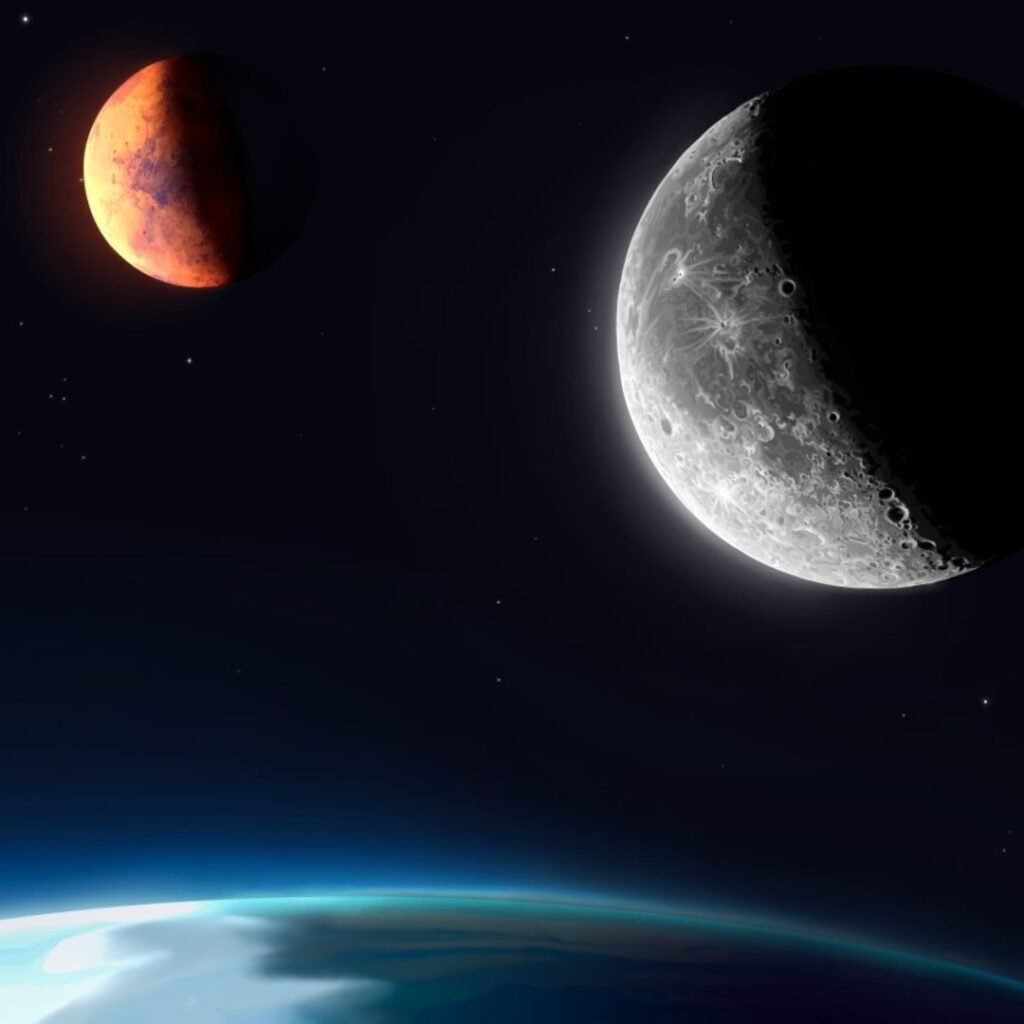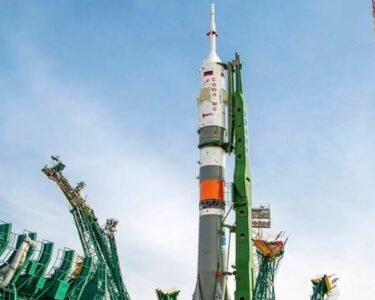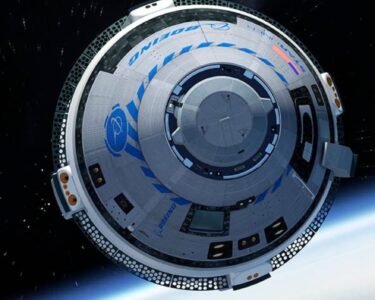Moon to Mars: NASA’s Vision for Deep Space Exploration
In the annals of human history, space exploration stands as one of the most exhilarating, challenging, and ultimately transformative endeavors. NASA’s ambitious Moon to Mars program epitomizes this quest, marking a new chapter in our cosmic journey. To establish a sustained human presence beyond Earth, this program is not just about exploration; it’s about pioneering a future in which humanity extends its reach into the solar system.
What is Moon to Mars Program?
The Moon to Mars Program, also known as Artemis, is NASA’s ambitious and multi-stage endeavor to land the first woman and the first person of color on the Moon by 2025 and establish a sustainable human presence there by the end of the decade. This serves as a stepping stone for the ultimate goal of sending humans to Mars in the future.

The Artemis Era: Gateway to the Moon and Beyond
The Artemis missions are like stepping stones in the Moon to Mars program, helping us get people back on the Moon and stay this time! The program’s name, Artemis, fittingly named after the twin sister of Apollo in Greek mythology, symbolizes a new era of lunar exploration—one that involves both men and women astronauts and sets the stage for the subsequent Mars missions.
Artemis Missions: Milestones and Objectives
- Artemis I: An uncrewed mission, laying the groundwork for future human exploration.
- Artemis II: Planned as the first crewed mission, orbiting the Moon.
- Artemis III: Aiming for a lunar landing, marking the return of humans to the Moon.
These missions are stepping stones towards establishing a long-term human presence on the Moon, serving as a testbed for the technologies and operational techniques that will be needed for the journey to Mars.
The Blueprint: Objectives and Strategies
NASA’s revised objectives for the Moon to Mars program, released in 2022, outline a matured strategy encompassing four broad areas: science, transportation and habitation, lunar and Martian infrastructure, and operations. This roadmap was crafted through extensive collaboration and feedback from NASA’s workforce, industry, public, and international partners, reflecting the collective aspiration of humanity’s exploration goals.

How Long is 1 Day on Mars?
There are two ways to measure a “day” on Mars, and they differ slightly:
- Sidereal day: This is the time it takes for Mars to complete one full rotation on its axis relative to a fixed point in space. This measurement is similar to our “sidereal day” on Earth and is 24 hours, 37 minutes, and 22 seconds. In other words, Mars spins on its axis almost like Earth, just a bit slower.
- Solar day: This is the time it takes for Mars to complete one full rotation on its axis relative to the Sun. This measurement is more similar to our everyday understanding of a “day” as it dictates the length of daylight and nighttime. A solar day on Mars, also known as a sol, is slightly longer than Earth Day, coming in at 24 hours, 39 minutes, and 35 seconds.
So, whether you’re counting by its spin relative to space or the Sun, a day on Mars is just a tad longer than an Earth Day, by about 40 minutes. The slightly longer rotation period means that sunrises and sunsets on Mars take just a bit longer than they do on Earth.
Core Areas of Focus: Moon to Mars Program
- Science: Pushing the boundaries of our knowledge about the Moon, Mars, and beyond.
- Transportation and Habitation: Developing the necessary vehicles, habitats, and life support systems.
- Lunar and Martian Infrastructure: Establishing the foundational elements for sustained human presence.
- Operations: Enhancing capabilities for communication, navigation, and operational efficiency.
The Role of International and Commercial Partnerships in the Moon to Mars Program
The Moon to Mars program is a true testament to international collaboration and commercial innovation. Space agencies like JAXA (Japan), ESA (Europe), and CSA (Canada) are crucial partners, contributing expertise and technology like the Canadarm3 robotic arm for the Gateway space station. Leading companies like SpaceX and Blue Origin are developing next-generation launch vehicles and lunar landers, pushing the boundaries of space travel. This global teamwork, with over 80 international partners and growing, ensures a diverse pool of talent and resources, making the seemingly impossible dream of landing humans on Mars a reality.
How Long Would It Take to Get to Mars from the Moon?
Traveling from the Moon to Mars would take considerably longer than traveling from Earth to Mars, potentially several months to years. This duration is due to the greater distance, launch limitations from the Moon’s surface, and the chosen trajectory and propulsion technology.
Challenges and Opportunities
The path to the Moon and Mars is fraught with challenges, such as harsh space environments and sustainable life support systems. However, these challenges present opportunities for innovation in propulsion technology, human health in space, and robotics, essential for the Moon to Mars program.
Can Humans Travel to Mars?
The Moon serves as a stepping stone to the ultimate goal: Mars. Learning from lunar missions, NASA aims to send humans to Mars, a venture that would be the longest and most challenging human spaceflight mission ever attempted. The knowledge and experience gained from the Moon to Mars program will be crucial in making this audacious goal a reality.
Conclusion: A New Era of Exploration
NASA’s Moon to Mars program is more than just a series of missions; it’s a beacon for human curiosity, ingenuity, and the relentless pursuit of knowledge. It represents a collective dream to explore, discover, and expand our presence in the cosmos. As we stand on the brink of this new era of exploration, the Moon to Mars program paves the way for a future where humanity’s footprint extends beyond Earth, to the Moon, Mars, and potentially beyond.
In the grand scheme of human history, the Moon to Mars program is not just a journey through space; it’s a journey through the potential and capabilities of humanity itself. As we embark on this voyage, we carry with us the hopes and dreams of all who look up at the stars and wonder what lies beyond.





